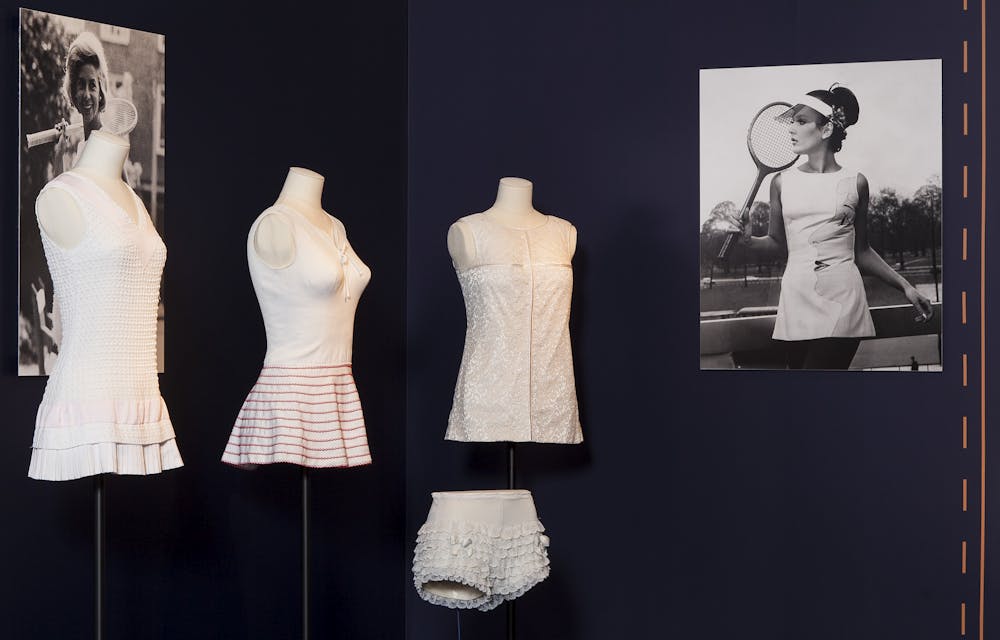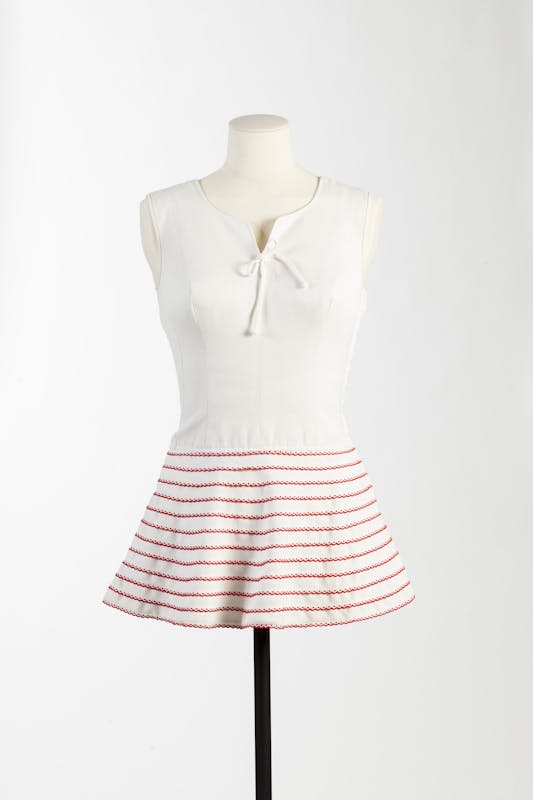Sportswear is currently riding high in the fashion world, and kit manufacturers showcase their creativity, innovation and daring in the outfits worn by the world’s best tennis players at prestigious tournaments.
Fashion: Ted Tinling, the pioneer
Shining the spotlight on his colourful life

Let us take a step back in time and (re)discover top British fashion designer Ted Tinling, who dressed some of the circuit’s best players in the 1970s, such as Billie Jean King, Lea Pericoli, Evonne Goolagong, Virginia Wade and Chris Evert.
This ground-breaking designer helped free the bodies of female athletes from restrictive clothing, provoking a veritable tidal wave in the tennis world.
I was pleased that Ted Tinling was featured in the film, ‘The Battle of the Sexes’ pic.twitter.com/WY7R3QzMSb
— bliss_street (@bliss_street) January 11, 2018
The forgotten fashion designer
It is 2018, yet Tinling’s artistic approach is still as relevant as ever. Often somewhat forgotten, “Teddy” was nevertheless one of the most iconic designers of his time. Shattering the accepted codes of the time and shaking up tennis fashion in the 1960s and 70s, the British designer was one of the key contributors to the liberation of the female body.
Turning the codes of the highly segregated tennis world on their head and leading a ground-breaking fashion revolution, Ted Tinling imposed his own style, focusing on the fact that a player’s outfit should express their personality and style of play.
Aware that a female tennis player’s personality is often completely different to her playing style, he toyed with this paradox, to the great dismay of the tournament organisers.
Via @TennisChannel how amazing was this Ted Tinling dress for Rosie Casals? pic.twitter.com/MAtY5yH0Wh
— J🎾NATHAN (@jokelley_tennis) September 6, 2017
The man of a million faces
Tennis player, spy, fashion designer and author, Cuthbert Collingwood, alias Ted Tinling, began his career as personal referee to “La Divine” Suzanne Lenglen. When he was diagnosed with asthma, Teddy’s parents decided to send him to the French Riviera, where he started playing tennis and met the young Suzanne’s father, who invited him to umpire one of her upcoming matches. Tinling went on to be her personal referee for two years.
From his first Wimbledon tournament in 1927 until 1949, he acted as an intermediary between the players and the organisers.
During the Second World War, he joined the Intelligence Corps as a spy, reporting back to the Joint Intelligence Committee.
A renowned tennis specialist, particularly for the women’s game, Tinling wrote a number of books about the discipline, embellishing his words with juicy anecdotes about this universe full of jealousy and fiercely-fought competition.
"For me, he is one of the greatest historians of our sport; when I need advice, when I need to make an important decision, I always ask him.” Philippe Chatrier
Ted Tinling passed away in 1990, leaving behind an extensive collection of memorable outfits that helped change the history of tennis.
Fashion designer. @Wimbledon icon. British spy.
— Tennis Channel (@TennisChannel) September 5, 2017
Ted Tinling did it all & changed @WTA tennis forever.
Watch TenniStory from @TennisExpress. pic.twitter.com/7NnwvwCQbL
Battle of the Sexes
During the rather chauvinistic 1970s, one particular event stands out: the exhibition match between Billie Jean King and Bobby Riggs.
A self-proclaimed “hustler”, Bobby Riggs, who had retired from professional tennis in 1962, publicly declared that women’s tennis was so inferior to the men’s game that he, a retired player, would be able to beat any current female player on the tennis court.
Revelling in the resulting media coverage, he invited Billie Jean King – a well-known women’s tennis champion and founder of the WTA, who would go on to become a campaigner for gender equality and gay rights – to play him in a match. No problem! King proudly sealed a straight-set victory: 6-4 6-3 6-3.
The expression "Battle of the Sexes" was coined in the run-up to this match, and has been used countless times since. It was Ted Tinling, a close friend of King’s, who designed her stylish outfit for this all-important duel in 1973.
You might recall Ted Tinling from "Battle of the Sexes" portrayed by Alan Cumming. pic.twitter.com/kWgv3qRRl9
— Margaret Middleton (@magmidd) September 22, 2018

Scandal on court!
Ted Tinling certainly liked to provoke the tennis world! Here are three outfits that caused a sensation on the courts.
One of his most famous quotes was, “In life, there are two types of class: first class and those who will never have it.” TT.
1. Françoise Dürr’s sexy outfit, worn on the red clay at Roland Garros in the late 1960s.
2. 1949: For American player, Gussy Moran, Tinling designed some visible lace-trimmed knickers to be worn underneath her dress. They were comfortable to play in, but went against the All England Lawn Tennis and Croquet Club’s strict dress code. Ted Tinling was officially banned from the Wimbledon tournament.
3. In 1965, Lea Pericoli wore an outfit designed by Ted Tinling, causing a stir by stepping out onto the court at Wimbledon in a very short, rose-trimmed dress. Looking back on her career, she claimed, “If I'd been born 30 years later I would have become terribly rich like Anna Kournikova.”
 ROLAND-GARROS
19 May - 8 June 2025
ROLAND-GARROS
19 May - 8 June 2025

